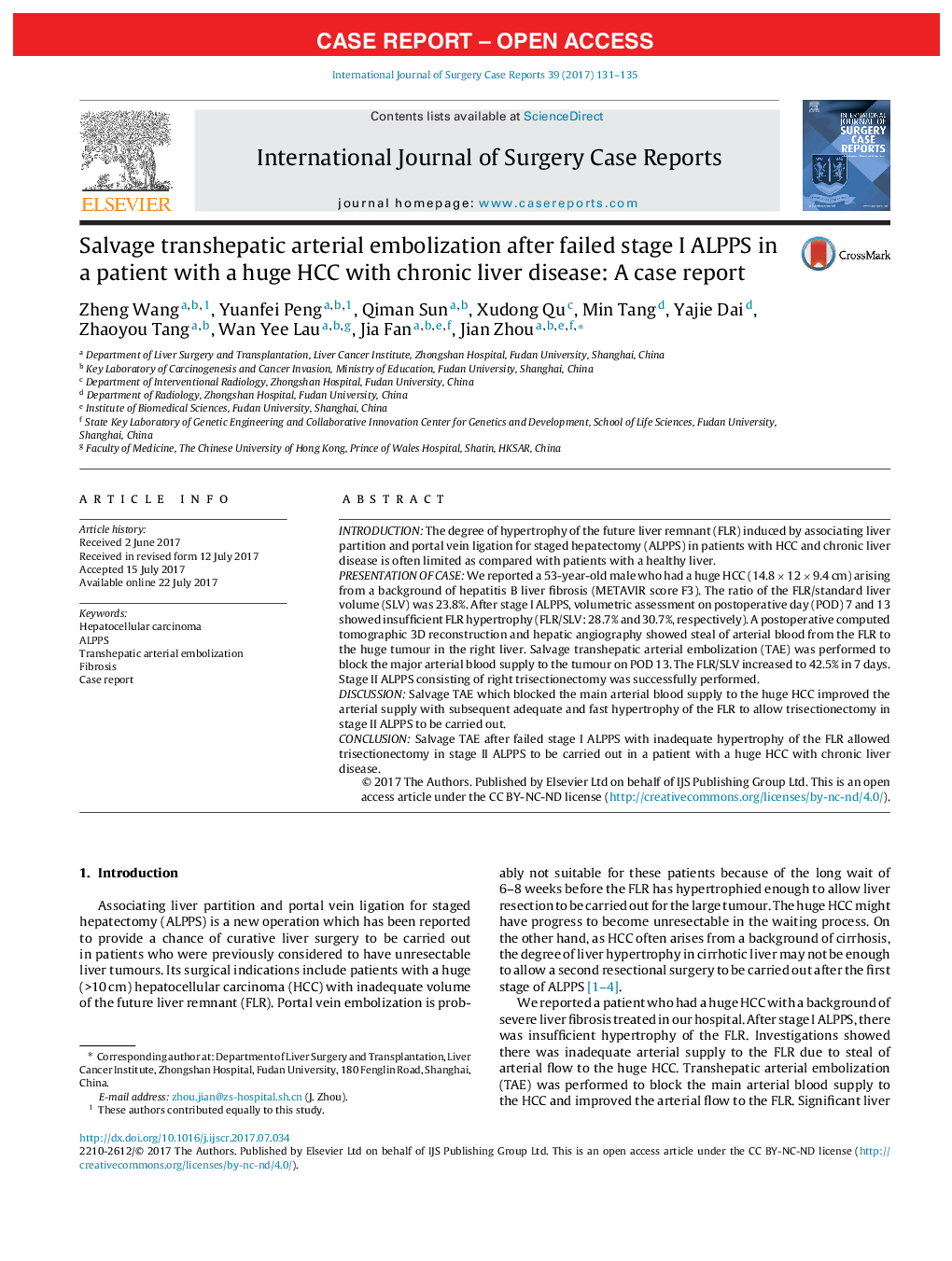| کد مقاله | کد نشریه | سال انتشار | مقاله انگلیسی | نسخه تمام متن |
|---|---|---|---|---|
| 5732756 | 1612075 | 2017 | 5 صفحه PDF | دانلود رایگان |

- The arterial supply of the future liver remnant (FLR) may be important for the FLR growth.
- Huge hepatocellular carcinoma (HCC) can cause blood-stream steal from the FLR, which can result in ALPPS failure.
- Transarterial embolization (TAE) of HCC can salvage failed Stage I ALPPS.
- TAE can induce significant hypertrophy of FLR.
- TAE-salvaged ALPPS may be suitable for huge HCC with chronic liver disease.
IntroductionThe degree of hypertrophy of the future liver remnant (FLR) induced by associating liver partition and portal vein ligation for staged hepatectomy (ALPPS) in patients with HCC and chronic liver disease is often limited as compared with patients with a healthy liver.Presentation of caseWe reported a 53-year-old male who had a huge HCC (14.8Â ÃÂ 12Â ÃÂ 9.4Â cm) arising from a background of hepatitis B liver fibrosis (METAVIR score F3). The ratio of the FLR/standard liver volume (SLV) was 23.8%. After stage I ALPPS, volumetric assessment on postoperative day (POD) 7 and 13 showed insufficient FLR hypertrophy (FLR/SLV: 28.7% and 30.7%, respectively). A postoperative computed tomographic 3D reconstruction and hepatic angiography showed steal of arterial blood from the FLR to the huge tumour in the right liver. Salvage transhepatic arterial embolization (TAE) was performed to block the major arterial blood supply to the tumour on POD 13. The FLR/SLV increased to 42.5% in 7Â days. Stage II ALPPS consisting of right trisectionectomy was successfully performed.DiscussionSalvage TAE which blocked the main arterial blood supply to the huge HCC improved the arterial supply with subsequent adequate and fast hypertrophy of the FLR to allow trisectionectomy in stage II ALPPS to be carried out.ConclusionSalvage TAE after failed stage I ALPPS with inadequate hypertrophy of the FLR allowed trisectionectomy in stage II ALPPS to be carried out in a patient with a huge HCC with chronic liver disease.
Journal: International Journal of Surgery Case Reports - Volume 39, 2017, Pages 131-135